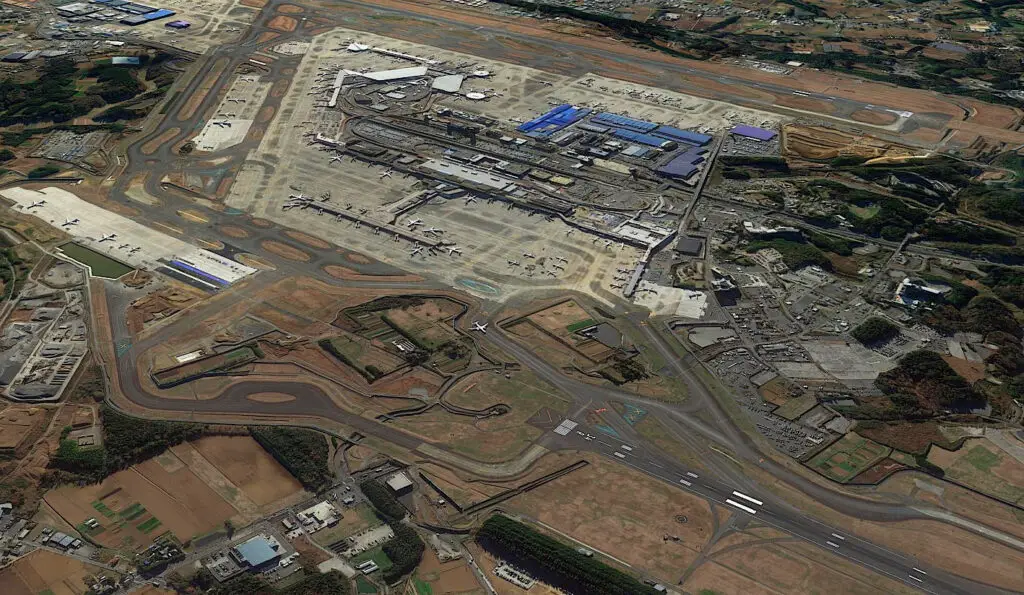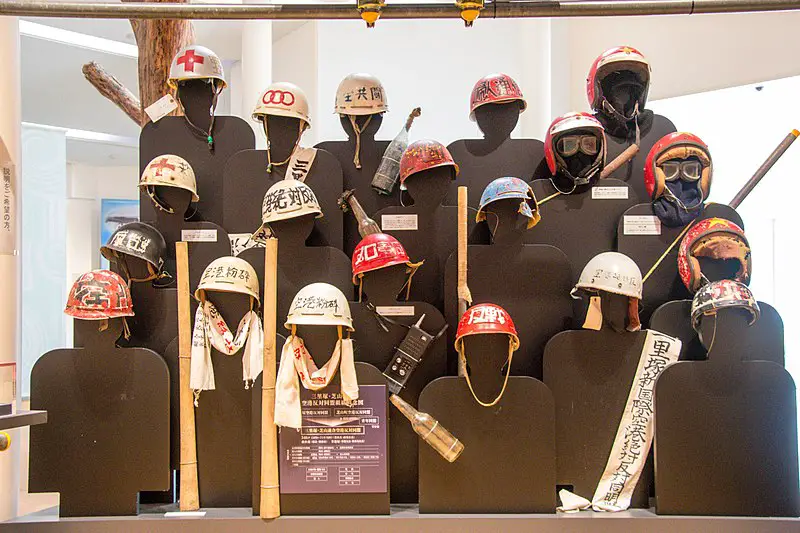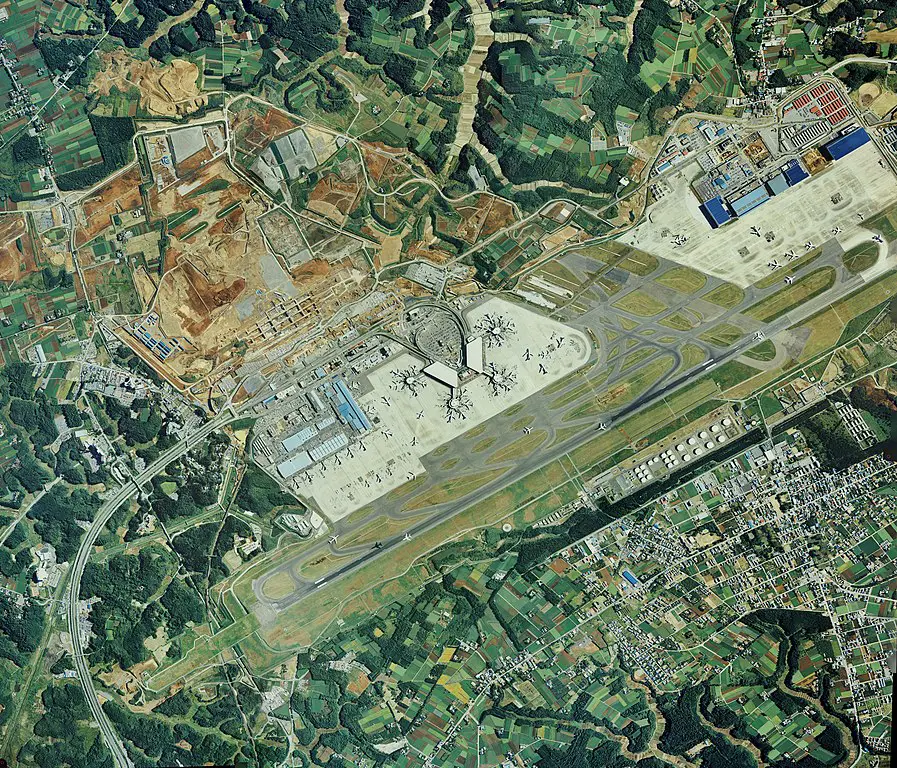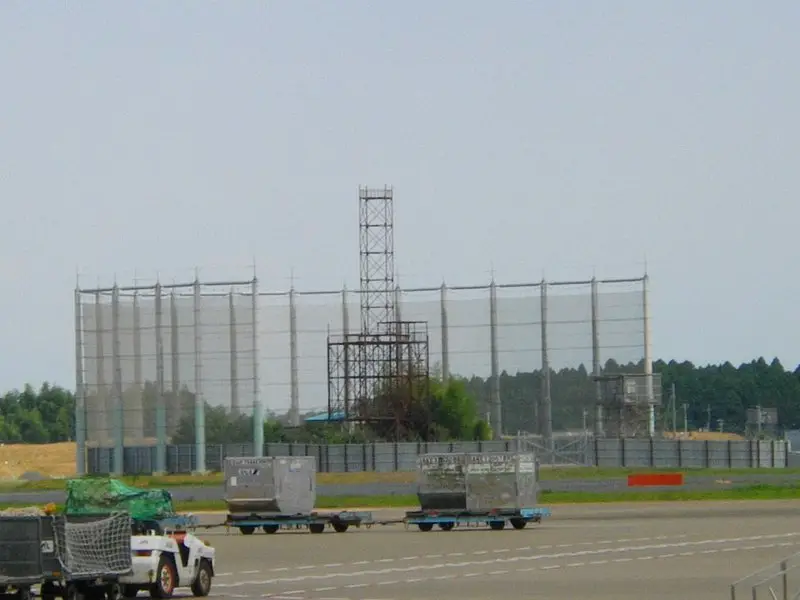
If you’re flying into Tokyo’s Narita International Airport, you might see something unusual between the taxiways. In the middle of the airport are patches of farmland and even houses. But these aren’t there because of a flaw in the design of the airport or terrain features. The farms are still there because the farmers on them refused to move when the airport was being built, leading to many years of conflict.
Five farms and homes remain between the taxiways and runways at Narita International, and they are producing farms that sell their produce locally. The story of why they are still there and how the farmers kept their land goes back to the 1960s.
Tokyo’s main airport since opening in 1931 was Haneda airport (officially known as Tokyo International Airport) which was close to downtown Tokyo. As the airport grew, it reached a limit where it couldn’t expand further. By the 1960s, a second airport to serve Tokyo was needed due to the increased growth of the city, the arrival of the Boeing 747, and the lifting of travel restrictions for Japanese citizens.
A new runway was proposed for Haneda, but anything past that was limited due to the airport’s location on the bay and the surrounding urban areas. The government decided that a new airport was needed. From 1963 to 1965, the Japanese Transport Ministry studied and then picked a rural area outside Tokyo near a village called Tomisato. The spot allowed for a large airport and possible future expansion.
Construction in this area meant that around half of the farms and villages would need to be removed, however. The farmers weren’t involved in the talks about the airport and responded by opposing the new project. Due to the backlash and the construction delays it could bring, the government decided to move the proposed airport five kilometers away near two villages called Sanrizuka and Shibayama.
Much of the land there was owned by the government, but now they had to deal with those farmers who owned farmland and would be in the way of the new airport. As the farmers did in the previous villages, these farmers also protested the construction of the proposed airport.
Despite the farmers’ opposition, construction of the airport began in the late 1960s, with the first terminal building being completed in 1972. The government did offer compensation for those farmers who left their land in 1968 as construction was starting, but the protests and continued aggressive opposition later made this more difficult. Some farmers took the payments, but the Japanese government forcibly took control of some areas in 1971, which they were allowed to do under Japanese law.
One of the problems with the selection of the site was that farmers were not adequately involved in the discussions. The farmers angrily opposed the building of the airport when the construction plans were announced, but things went to another level when left-wing opposition groups joined the ranks, and the movement became organized. The new protesting group called itself the Sanrizuka-Shibayama Opposition Alliance. It was mainly composed of anti-government students who saw the government as illegally seizing the land.
Disruptive protests continued throughout the construction of the airport, and the Opposition Alliance even built structures, barricades, and lookout towers on the farmland to slow down the construction. One of these was a 60-meter tower put up in 1972 on the approach end of the main runway to disrupt test flights. The Japanese government wasn’t able to get control of this area and remove the tower until 1977, a year before the airport was scheduled to open.
The airport’s opening was supposed to be in March 1978, but it was delayed after protestors gained access to the airport grounds and caused widespread damage, including storming the control tower and damaging the equipment. The conflict had been widespread and persistent, and in one period between February and March 1971, 25,000 law enforcement officers and 20,000 protesters were clashing. In that short time, 700 people were injured, and almost 500 were arrested.

The first runway had only been completed in 1978, and ongoing protests throughout the years, even after the airport opened, delayed building a second runway until 2002. The original plans for the airport had it having a possible five runways. On November 26, 1986, construction began on Phase II, with the building of a new terminal and runway north of the airport’s original main runway.
The farmers continued to stay, and the new expansion was built around them, with the new runway having to be shorter than planned. The protests from the Opposition Alliance slowly faded as the years passed, but it was still a requirement to show identification to get into the airport up until 2015.

National Land Image Information

Five farms remain today, located within the boundaries of the airport. A taxiway makes a circuitous route around a couple of them, surrounded or bordered by taxiways, airport structures, or the approach end of one of the runways. There were originally 28 households in one village and 66 in the other. The farms still there are actively producing, though the tension surrounding the area remains today because of its complicated history.
Sources: JSTOR, Simple Flying, Taipei Times


